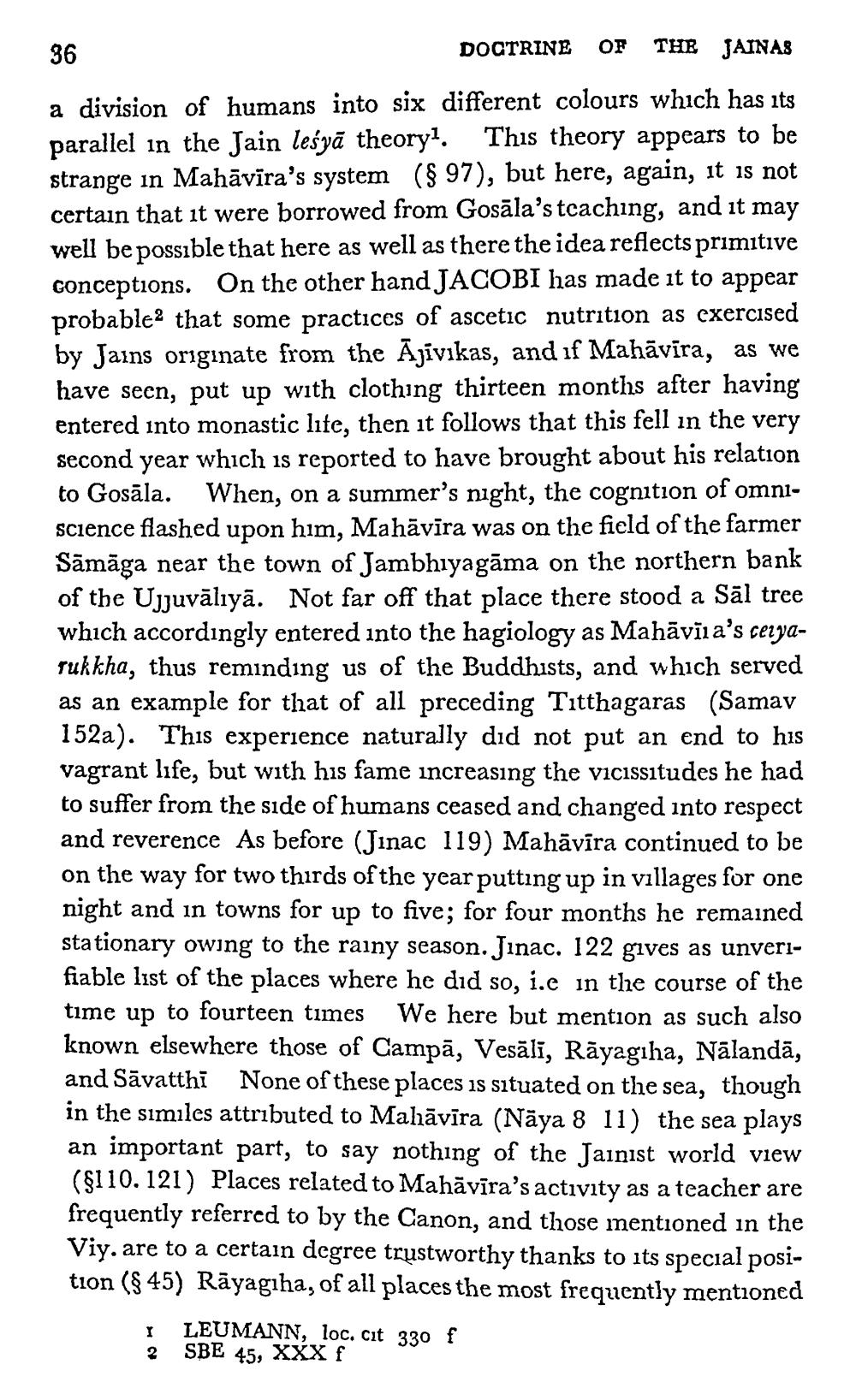________________
36
DOCTRINE OF THE JAINAS
a division of humans into six different colours which has its parallel in the Jain leśyā theorył. This theory appears to be strange in Mahāvīra's system ($ 97), but here, again, it is not certain that it were borrowed from Gosāla's tcaching, and it may well be possible that here as well as there the idea reflects primitive conceptions. On the other hand JACOBI has made it to appear probable that some practices of ascetic nutrition as exercised by Jains originate from the Ājivikas, and if Mahāvīra, as we have seen, put up with clothing thirteen months after having entered into monastic life, then it follows that this fell in the very second year which is reported to have brought about his relation to Gosāla. When, on a summer's night, the cognition of omniscience flashed upon him, Mahāvīra was on the field of the farmer Sāmāga near the town of Jambhiyagāma on the northern bank of the Ujjuvālıyā. Not far off that place there stood a Sāl tree which accordingly entered into the hagiology as Mahāvīia's ceryaTukkha, thus reminding us of the Buddhists, and which served as an example for that of all preceding Titthagaras (Samav 152a). This experience naturally did not put an end to his vagrant life, but with his fame increasing the vicissitudes he had to suffer from the side of humans ceased and changed into respect and reverence As before (Jinac 119) Mahāvīra continued to be on the way for two thirds of the year putting up in villages for one night and in towns for up to five; for four months he remained stationary owing to the rainy season. Jinac. 122 gives as unverifiable list of the places where he did so, i.e in the course of the time up to fourteen times We here but mention as such also known elsewhere those of Campā, Vesālī, Rāyagiha, Nālandā, and Sāvatthi None of these places is situated on the sea, though in the similes attributed to Mahāvīra (Nāya 8 11) the sea plays an important part, to say nothing of the Jainist world view (§110.121) Places related to Mahāvīra's activity as a teacher are frequently referred to by the Canon, and those mentioned in the Viy.are to a certain degree trustworthy thanks to its special position ($45) Rāyagiha, of all places the most frequently mentioned
I LEUMANN, loc. cit 330 f 2 SBE 45, XXX f




